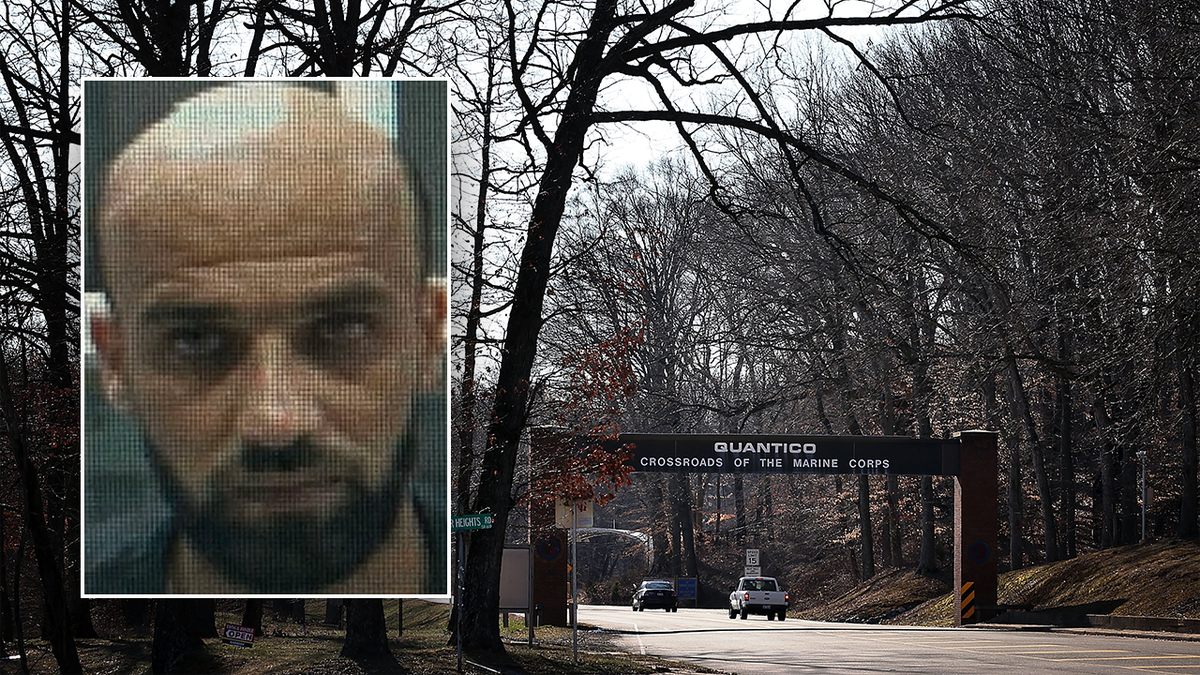
Jordanian National Re-Arrested After Quantico Base Breach, Raising Security Concerns
The saga surrounding two Jordanian nationals who allegedly trespassed at Marine Corps Base Quantico earlier this year has taken a new turn, reigniting concerns about national security and immigration enforcement. Hasan Yousef Hamdan, 32, has been re-arrested by Immigration and Customs Enforcement (ICE) after being initially released on bond following the May 3, 2024, incident. This development has intensified criticism of the Biden administration’s immigration policies and sparked further debate about the potential threat posed by the initial breach.
Hamdan and Mohammad Khair Dabous, 28, were initially apprehended after allegedly driving a box truck onto the heavily secured Marine Corps base. The incident immediately raised alarms within security circles, with some experts suggesting that the attempted entry could have been a "dry run" for a future terrorist attack. The fact that they were subsequently released on bond, with Hamdan reportedly appearing on a terror watch list, fueled outrage among some members of Congress and security analysts.
Following their initial arrest, both men were transferred to ICE custody. Hamdan was released on a $15,000 bond, while Dabous was released on a $10,000 bond. As part of the conditions for their release, they were required to attend all future immigration hearings and were prohibited from approaching any U.S. military facilities.
The recent re-arrest of Hamdan has amplified the scrutiny surrounding the circumstances of the original breach and the subsequent decision to release the two men on bond. According to a report by the New York Post, Hamdan, who initially entered the U.S. near San Diego in April 2024, is now being held at the Caroline Detention Facility in Bowling Green, Virginia. This facility is used by ICE to house both asylum seekers and individuals awaiting deportation.
The specific reason for Hamdan’s re-arrest remains unclear, and ICE has not yet responded to requests for comment. However, the fact that he is now in a detention facility suggests that authorities may have new concerns about his potential threat to national security or that he may have violated the terms of his release.
The initial release of Hamdan on bond, particularly given reports of his possible inclusion on a terror watch list, drew sharp criticism from Republican lawmakers. Representative Andy Biggs of Arizona, a vocal critic of the Biden administration’s immigration policies, condemned the decision, stating, "It is unthinkable that illegal aliens who attempted to gain access to a secure U.S. military facility would be released on bail, but the radical Biden-Harris regime has once again disregarded existing immigration law in favor of the comfort of foreign nationals."
The concerns surrounding the Quantico incident extend beyond just the alleged trespass itself. Security experts like Dave Katz, a former federal firearms instructor who worked at Quantico and now serves as CEO of Global Security Group, have raised serious questions about the men’s explanation for being on the base.
According to reports, Hamdan and Dabous claimed they were contracted drivers for Amazon and were attempting to make a delivery. However, Katz points to inconsistencies in their story, highlighting the fact that one man allegedly entered the U.S. illegally while the other overstayed his student visa, and yet they somehow ended up together in a box truck attempting to access a sensitive military installation.
"A student overstay somehow gets in contact with someone illegally crossing into the U.S. on the other side of the country. Both of them wind up in that truck," Katz said. "There is no possible explanation for what happened other than a sinister one."
Katz further warned that the attempted breach could have been a reconnaissance mission for a future attack. "Driving the box truck was a dry run for driving a box truck that was not going to be empty the second time," he stated, drawing a parallel to the 9/11 hijackers who reportedly attempted to board planes with box cutters prior to the actual attacks.
The Quantico Marine Corps Base is not only a training facility but also houses a lab for the FBI and the Drug Enforcement Administration, making it a potentially attractive target for terrorist groups. The fact that the two men allegedly attempted to gain access to the base in a box truck further heightened concerns, given the potential for such a vehicle to be used to transport explosives or other dangerous materials.
Adding another layer of complexity to the case, the charges related to the initial breach were dismissed without prejudice in October at the request of the U.S. Attorney for the Eastern District of Virginia, Jessica Aber. Aber, a Biden appointee, has since been replaced by Erik Siebert, a former federal prosecutor and Metropolitan Police Department officer. The dismissal of the charges, while not preventing future prosecution, raised eyebrows among some legal observers.
While the charges related to the initial breach have been dropped, Hamdan and Dabous still face immigration proceedings, and the recent re-arrest of Hamdan underscores the ongoing legal and security implications of the case. The incident has become a flashpoint in the debate over border security, immigration enforcement, and the potential for terrorist threats within the United States.
The focus is now on ICE’s investigation into the circumstances surrounding Hamdan’s re-arrest and whether new evidence has emerged that suggests a greater threat to national security. The outcome of the immigration proceedings for both men will also be closely watched, as will any potential future criminal charges related to the initial Quantico incident. The case serves as a stark reminder of the challenges facing law enforcement and national security agencies in a complex and ever-evolving threat landscape. The incident at Quantico, whether a simple misunderstanding or a more sinister plot, has exposed vulnerabilities and highlighted the need for continued vigilance and robust security measures at critical infrastructure sites across the country.
